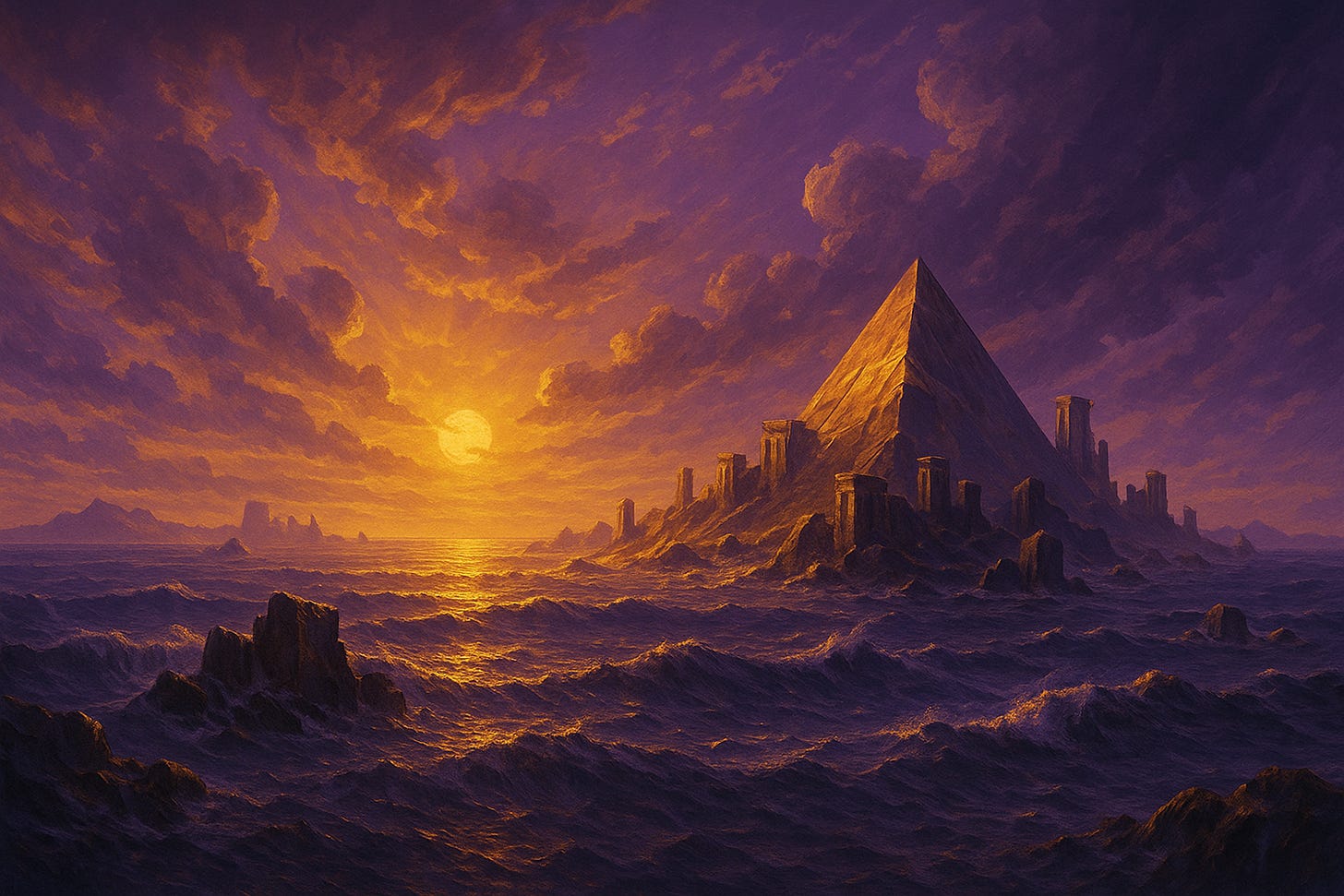Echoes of Atlantis: A Vision from the Ancient Past (Part 3)
Edgar Cayce’s View of Early Humanity and a Lost Continent, in Today’s Words
Yes, we're looking at the subject and the associated conditions. As has been mentioned before, a lot of information has been received through psychic means over time about the circumstances during different periods of this continent’s existence. That the continent actually existed is now being proven as fact.
So what happened during the times when the continent was breaking apart? What became of the people? What kind of civilization did they have? Is there any evidence that some of them escaped? The location of the continent and related details should be important to people today—whether because souls are being reborn now to grow spiritually, or because people today are being guided in their personal development by the spirits of those who lived there. If that's true, then these spiritual forces are having—and will continue to have—an influence on events in our modern world.
Atlantis was located between the Gulf of Mexico on one side and the Mediterranean Sea on the other. Evidence of this lost civilization can be found in the Pyrenees and Morocco on one side, and in British Honduras, Yucatán, and parts of America on the other. Some sections of land that stick out today were part of that great continent. The British West Indies or the Bahamas—and especially Bimini—are areas where, if proper geological studies were done, remains of Atlantis could still be found, particularly near the Gulf Stream.
So, what were the people like? To understand them properly, we should follow the story of a group or an individual over the course of Atlantis’s history. This can help us get a picture of their personality, appearance, and their spiritual and physical development.
Around 98,000 to 100,000 years before the Indian figure Ram appeared in India, there was someone named Amilius living in Atlantis. He was the first to observe how beings had split into separate male and female individuals. In physical form, these beings weren’t like us at first—they were more like “thought-forms,” able to project parts of themselves outward, shaped by their own thoughts. Kind of like how an amoeba moves in still water today.
As these forms took on more material qualities—driven by their own desires and experiences—they became more solidified, eventually taking on human-like bodies. Their skin color adapted to their environment, similar to how a chameleon changes color. This transformation led to what we later call the “Red Race”—a mixed group of people whose development reflected their surroundings.
These early people could harness the energies in their environment and evolved faster than people in other parts of the world. Even though the full story of their destruction has been lost, evidence remains in geological records. The influence of these ancient people continues in the lives of those who descended from them—or are reincarnations of them—or even through mental or spiritual influence on others today.In terms of how they lived—their morals, their society, and their spiritual life—they had classes and roles similar to other civilizations. But as a people, they didn’t have the same kind of warlike tendencies that existed in other parts of the world.
To be continued.



